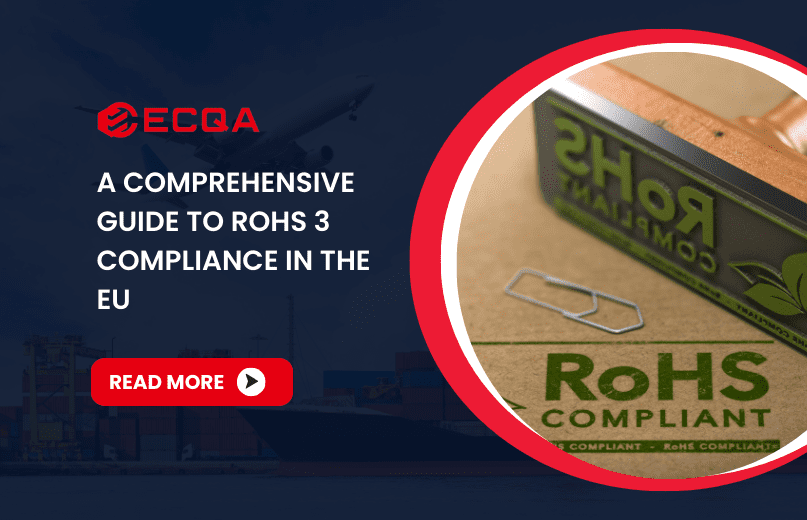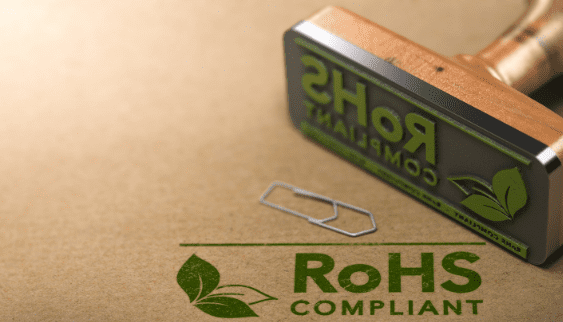
A Comprehensive Guide to RoHS 3 Compliance in the EU

RoHS stands for Restriction of Hazardous Substances. It is a regulation in the European Union that aims to protect human health and the environment by restricting the use of certain hazardous materials in electrical and electronic equipment (EEE). The primary purpose of RoHS is to reduce the risks associated with the manufacturing, use, and disposal of electronic products by limiting the presence of specific harmful substances.
Navigating RoHS compliance can be a complex process, but it is essential for any business wishing to market their electronic products within the EU. This comprehensive guide will provide you with the essential information to ensure your products are RoHS compliant.
Understanding RoHS 3
RoHS 3 (Restriction of Hazardous Substances Directive 2015/863) is a critical regulatory update within the European Union (EU) affecting all electrical and electronic equipment (EEE). This directive mandates that manufacturers must comply with RoHS by ensuring their products are free from harmful substances listed under the directive.
The original RoHS Directive was implemented in 2003 to address growing concerns about the environmental impact of hazardous substances used in electronics equipment. The directive primarily targeted materials that posed significant health risks during manufacturing, disposal, and recycling processes. As environmental and health concerns evolved, the directive was updated first to RoHS 2 (Directive 2011/65/EU) and then to RoHS 3.
RoHS 3 expanded the scope of the directive by adding four new substances to the original six, resulting in a total of ten restricted substances. These substances are known to cause adverse health effects and environmental harm, especially in the context of e-waste.
List of Substances Regulated by RoHS 3
The original RoHS directive, introduced in 2002, restricted six hazardous substances in electrical and electronic equipment (EEE). On July 22, 2019, the implementation of RoHS 3 expanded this list by adding four additional phthalates. The complete list now includes:
- Lead (Pb)
- Mercury (Hg)
- Cadmium (Cd)
- Hexavalent chromium (Cr VI)
- Polybrominated biphenyls (PBB)
- Polybrominated diphenyl ethers (PBDE)
- Bis(2-ethylhexyl) phthalate (DEHP)
- Butyl benzyl phthalate (BBP)
- Dibutyl phthalate (DBP)
- Diisobutyl phthalate (DIBP)
These substances are known to pose significant risks to human health and the environment, and their presence in EEE is strictly controlled. Each restricted substance has a maximum concentration limit. Products exceeding these limits are prohibited from sale in the EU market. RoHS compliance is therefore crucial for manufacturers aiming to distribute their products in Europe. .
RoHS Compliance Testing
To ensure RoHS compliance, manufacturers must conduct rigorous testing for the listed restricted substances. Compliance not only protects consumers but also ensures access to the lucrative EU market, particularly for high-risk categories like medical devices.
What is RoHS Compliance?
To achieve RoHS compliance, manufacturers and importers of electrical and electronic devices must adhere to the following key requirements:
- Substance Restrictions: Ensure that the concentration of restricted substances in homogenous materials within your products does not exceed the maximum permitted levels. Homogenous material is a material that can not be mechanically separated into different materials.
- Technical Documentation: Maintain comprehensive technical documentation demonstrating your products’ compliance with RoHS. This includes information on materials, components, test results, and risk assessments. This documentation should be readily available and traceable, in case of inspection. A detailed technical file is important for your records.
- Conformity Assessment: Conduct conformity assessments to verify that your products meet RoHS requirements. This can involve internal testing or the use of third-party testing laboratories. A conformity assessment will check your documentation, testing, and will verify that you are complying with the latest version of the law.
- CE Marking: Affix the CE marking to your products to indicate their compliance with RoHS and other applicable EU directives. The CE mark shows that the product has been assessed and deemed compliant with EU health and safety laws, and is a requirement for placing goods on the EU market.
- Registration and Notification: Register your products with the relevant national authorities in the EU member states where you intend to market them. Each member state may have its own requirements, so it is important to check your specific product. Registrations are usually kept up to date on a yearly basis.
Why RoHS 3 Matters
RoHS 3 is vital for reducing hazardous substances in electronic equipment, thereby protecting both human health and the environment. RoHS isn’t just about following regulations; it’s about responsible manufacturing and contributing to a sustainable future. In fact, studies show that companies with strong sustainability practices have a 20% higher brand recognition. By adhering to RoHS standards, you’re not just avoiding penalties; you’re also:
- Protecting Human Health: Reducing exposure to toxic materials, which have been linked to various health problems including cancer and reproductive issues.
- Minimizing Environmental Impact: Preventing soil and water contamination, which can harm wildlife and ecosystems. Data from the European Environment Agency estimates that 10 million tonnes of e-waste are produced in the EU each year. RoHS helps to reduce the risk of harm caused by this e-waste.
- Gaining Market Access: Ensuring your products can be legally sold in the EU. Products not meeting the requirements are not allowed to be sold in the EU, a market of over 450 million consumers.
- Enhancing Brand Reputation: Demonstrating a commitment to sustainability and ethical practices, which is becoming more and more important to modern consumers.
- Reducing Risk: Avoiding costly recalls and legal issues. Non-compliance with RoHS can result in fines up to tens of thousands of euros.
Achieving RoHS compliance is a critical step for any business wishing to market their products within the EU. By following the steps outlined in this guide and staying informed about any updates to the RoHS directive, you can ensure that your products comply with RoHS and avoid potential legal and financial consequences. Companies that comply with RoHS, are more likely to have better brand recognition, and customer loyalty.
By proactively addressing RoHS compliance, you can protect your business, safeguard human health and the environment, and gain a competitive advantage in the EU market. By complying with standards like RoHS, you are also improving the environmental and social credentials of your organisation.
Ensure Your Products Meet RoHS Standards
Navigating RoHS compliance is crucial for your business, but achieving it requires thorough testing and verification. Explore our comprehensive product testing services to ensure your products meet all RoHS requirements and stand out in the EU market. Our expert team is here to help you with accurate, reliable testing and compliance solutions. For a better understanding of what product compliance entails, please read our article on Product Compliance.

 Request Free Sample Report
Request Free Sample Report
Leave a Comment